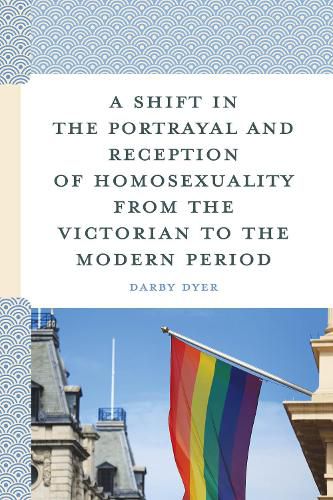Readings Newsletter
Become a Readings Member to make your shopping experience even easier.
Sign in or sign up for free!
You’re not far away from qualifying for FREE standard shipping within Australia
You’ve qualified for FREE standard shipping within Australia
The cart is loading…






A Shift in the Portrayal and Reception of Homosexuality from the Victorian to the Modern Period explores how the reception of homosexuality in literature evolved and morphed greatly from the late 19th century to the 20th century and how the gender of the author played a particularly import role. Victorian society scorned and punished gay men to a harsher degree due to the subversive, taboo, and "emasculating" nature of male homosexuality, as evident in the reception of Oscar Wilde's The Picture of Dorian Gray. In contrast, the Modern period saw a positive portrayal and reception of homosexuality in Virginia Woolf's Mrs. Dalloway. Modern society as well as Victorian society accepted same-sex female relationships under the assumption that women were incapable of engaging in sexual acts-an assumption influenced by Queen Victoria. Thus, on the surface, both societies tolerated female homosexuality in literature. However, this distorted tolerance was a limiting and silencing force. Darby Dyer compares the homosexuality in the works and lives of Wilde and Woolf to other authors during their time periods to address how far queer representation has come in literature and other arts. She concludes with a call to action that the fight is not over.
$9.00 standard shipping within Australia
FREE standard shipping within Australia for orders over $100.00
Express & International shipping calculated at checkout
A Shift in the Portrayal and Reception of Homosexuality from the Victorian to the Modern Period explores how the reception of homosexuality in literature evolved and morphed greatly from the late 19th century to the 20th century and how the gender of the author played a particularly import role. Victorian society scorned and punished gay men to a harsher degree due to the subversive, taboo, and "emasculating" nature of male homosexuality, as evident in the reception of Oscar Wilde's The Picture of Dorian Gray. In contrast, the Modern period saw a positive portrayal and reception of homosexuality in Virginia Woolf's Mrs. Dalloway. Modern society as well as Victorian society accepted same-sex female relationships under the assumption that women were incapable of engaging in sexual acts-an assumption influenced by Queen Victoria. Thus, on the surface, both societies tolerated female homosexuality in literature. However, this distorted tolerance was a limiting and silencing force. Darby Dyer compares the homosexuality in the works and lives of Wilde and Woolf to other authors during their time periods to address how far queer representation has come in literature and other arts. She concludes with a call to action that the fight is not over.